





































EXECUTIVE
Jon R. Roth, MS, CAE
EDITORIAL
EDITOR,
Lauren S. Williams
DESIGNED BY Morganne Stewart
Michelle Caraballo, MD, Chair
Ravindra Mohan Bharadwaj, MD
Jawahar Jagarapu, MD
Ravina R. Linenfelser, DO
Sina Najafi, DO
Celine Nguyen, Student
Shyam Ramachandran, Student
Erin Roe, MD, MBA
Shaina Drummond, MD, President
Gates Colbert, MD, President-elect
Vijay Giridhar, MD, Secretary/Treasurer
Deborah Fuller, MD, Immediate Past President
Emma Dishner, Board of Censors Chair
Neerja Bhardwaj, MD
Justin Bishop, MD
Sheila Chhutani, MD
Philip Huang, MD, MPH
Nazish Islahi, MD
Allison Liddell, MD
Riva Rahl, MD
Anil Tibrewal, MD









At Broadway Bank, we understand that access to the right medical equipment is critical for providing top-notch care. Our flexible loan options are designed to get you the equipment you need—when you need it.
• Quick and Easy Application Process: Our streamlined application process is designed to get you funds quickly, so you can focus on growing your business.
• Flexible Repayment Options: We offer a variety of repayment plans to suit your cash flow, making it easier to manage your financial obligations.
• Local Expert Support: Our team of experts is here to guide you every step of the way, providing personalized service and support to help you make the best financial decisions for your business. Contact us today to learn more about our equipment loan options and discover how we can help take your business to the next level.
broadway.bank/health • (214) 227-7063


Shaina Drummond, MD
THIS MONTH’S JOURNAL EXPLORES THE LEGAL developments currently shaping the practice of medicine in Texas. With a wave of legislation under consideration, key issues—including tort reform, scope of practice, the rising role of Artificial Intelligence (AI) in healthcare, abortion laws, antikickback provisions, THC regulation, gender-affirming care, and medical spa oversight—are expected to spark intense debate. Amid these shifts and the introduction of new Texas Medical Board rules, it’s critical for physicians to stay informed and involved. Even if not every topic applies to all, awareness and engagement remain essential to safeguarding both patient care and professional integrity.
The History of Tort Reform in Texas
Texas has long been known for its strong tort reform laws, which limit non-economic damages in medical malpractice lawsuits. In 2003, Texas passed House Bill 4—the Medical Malpractice and Tort Reform Act—alongside a constitutional amendment. This law capped non-economic damages (such as pain and suffering) at $250,000 in malpractice lawsuits against individual physicians, with an additional $500,000 available from institutions, capping total noneconomic damages at $750,000 per case. Economic damages, like lost wages or medical bills, remain uncapped. The goal was to curb lawsuit abuse, lower malpractice pre-
miums, and attract more doctors to the state—especially in underserved communities. In 2025, the Texas medical tort reform system remains intact, but it is under increasing scrutiny. Critics argue the cap undervalues patient harm and discourages legitimate claims. As the debate resurfaces, it’s essential for physicians to have a voice in shaping the future—one that protects their ability to practice while preserving fair access to the courts for patients who are truly harmed.
In 2025, scope of practice in Texas continues to be a topic of significant legislative attention and debate. Currently, Texas law requires nurse practitioners (NPs) and physician assistants (PAs) to work under the supervision of a licensed physician through a delegated agreement, which includes oversight, chart reviews, and regular meetings. Unlike in some other states, NPs and PAs in Texas cannot practice or prescribe independently. Recent legislative efforts, including Senate Bill 911 and House Bill 1756, have aimed to grant full practice authority to advanced practice registered nurses after a set number of clinical hours, but these proposals have not passed. Physician organizations such as the Texas Medical Association and the Dallas County Medical Society have strongly opposed such measures, emphasizing the importance of physician-led, team-based care to maintain high standards and ensure patient safety. While advocates for expansion argue it would improve access in underserved areas, concerns persist about fragmented care, reduced oversight, and the potential for compromised quality if non-physician providers are granted more autonomy.
AI is revolutionizing healthcare, but its legal implications remain unclear. Physicians are increasingly relying on AI-driven diagnostic tools and treatment algorithms, raising concerns about liability. If an AI system misdiagnoses a patient, who bears the legal responsibility—the doctor, the AI developer, or the hospital? This legal gray area could lead to significant malpractice cases in the coming years.
Another major concern is control over AI development. If insurance companies and private equity firms dictate AI usage, patient care decisions could be driven more by financial incentives than medical expertise. Physicians must advocate for leadership roles in AI development to ensure these systems prioritize patient health over cost-cutting measures. Moreover, regulatory agencies like the FDA are working to establish guidelines, but state-level policies will also play a critical role in determining how AI is integrated into Texas healthcare. As of 2025, Texas does not yet have AI-specific laws tailored exclusively to medicine, but existing and proposed regulations are starting to shape how AI can be used in healthcare.
As of 2025, abortion is almost entirely banned in Texas following the U.S. Supreme Court’s 2022 decision to overturn Roe v. Wade. In response, Texas’s trigger law—House Bill 1280—went into ef-
fect, prohibiting all abortions except when the pregnant patient’s life is in serious danger. The law provides no exceptions for rape, incest, or fetal abnormalities. Physicians who perform abortions face harsh penalties, including fines of at least $100,000 and potential life imprisonment. Prior to this, Texas enacted Senate Bill 8 (SB 8), also known as the Texas Heartbeat Act, in September 2021. SB 8 bans abortions after roughly six weeks of pregnancy, when cardiac activity can be detected, and relies on a civil enforcement mechanism that allows private citizens to sue anyone who performs or assists with an abortion. This includes doctors, clinic staff, and even those who help with transportation or payment. Although the trigger law now supersedes SB 8 in practice, its civil enforcement provisions technically remain in place. The vague language surrounding medical exceptions has created confusion and fear among physicians, contributing to high-profile legal challenges such as Zurawski v. State of Texas, in which the Texas Supreme Court upheld the current restrictions without providing clearer guidance.
Texas House Bill 1493, known as the Life of the Mother Act, was introduced in December 2024 to clarify legal protections for physicians providing emergency care to pregnant patients. The bill offers an affirmative defense against civil liability for doctors who, using reasonable medical judgment, treat conditions such as ectopic pregnancies, previable premature rupture of membranes, or other serious pregnancy complications likely to cause substantial bodily harm. The goal is to ensure physicians can act quickly in life-threatening situations without fear of legal repercussions. As of March 2025, the bill is under review in the House Judiciary & Civil Jurisprudence Committee.
Additionally, as of mid-2022, Texas abortion laws do not explicitly address in vitro fertilization (IVF) or other fertility treatments, leaving future implications uncertain until clarified by the courts.
Texas enforces stringent anti-kickback laws, prohibiting financial incentives that could influence medical referrals. Physicians must be careful about how they structure business relationships with pharmaceutical companies, medical device manufacturers, and other healthcare entities.
Violations of the Texas Anti-Kickback Statute can result in severe penalties, including fines, loss of licensure, and criminal charges. It is critical for healthcare providers to conduct thorough legal reviews of any financial agreements and seek legal counsel to ensure compliance with federal and state regulations.
As of 2025, Texas maintains strict laws on THC, with recreational use of marijuana still illegal statewide. Possession of even small amounts of delta-9 THC can result in criminal charges, though some cities have adopted local policies to reduce enforcement. The state’s medical marijuana program—the Texas Compassionate Use Program—allows limited use of low-THC cannabis (less than 1% THC by weight) for qualifying conditions such as epilepsy, cancer, PTSD, and multiple sclerosis, but access remains tightly controlled. Hemp-derived products containing less than 0.3% delta-9 THC are legal, yet compounds like delta-8 THC exist in a legal gray area and remain the subject of ongoing legal disputes. In 2025, several bills are under consideration that could significantly impact THC regulation. Senate Bill 3 aims to ban all consumable THC products outside the medical program, while Senate Bill 1505 would expand medical access and raise THC concentration limits. Meanwhile, House Bill 1208 proposes legalizing recreational cannabis for adults, though it faces strong opposition.
In 2023, Texas enacted SB 14, which bans gender-affirming care for minors, despite opposition from major medical organizations like the American Academy of Pediatrics. This law prevents physicians from prescribing hormone therapy or puberty blockers or performing gender-affirming procedures for individuals under 18.
Doctors who previously provided this care now face legal uncertainty, as violating the law could result in professional penalties or loss of licensure. Physicians must navigate these regulations carefully while advocating for evidencebased healthcare practices.
Medical spas in Texas are required to operate under the
supervision of a licensed physician, who must delegate and oversee any medical procedures performed, including cosmetic treatments. Only physicians or physician-owned entities can legally own and operate these facilities, and a proper physician-patient relationship must be established before any treatment. However, current regulations lack specificity and enforcement is inconsistent, as there is no dedicated licensing framework for medical spas. This has raised safety concerns, particularly around nonphysician providers performing procedures without adequate oversight. In response, proposed legislation such as House Bill 3749 aims to strengthen regulations by requiring designated medical directors, clearer training standards, and on-site physician availability to ensure patient safety and professional accountability.
Significant updates to the Texas Medical Board’s (TMB) regulations took effect in 2025, impacting various medical practices, including medical spas, IV hydration clinics, and telemedicine providers. Physicians overseeing these services must ensure compliance with new licensure and supervision requirements to avoid penalties. On January 9, 2025, the Texas Medical Board implemented major rule changes impacting medical spas, IV hydration clinics, and related healthcare settings. Key updates include stricter transparency requirements, such as publicly displaying the supervising physician’s name and license number and updating advertising materials. All delegation must now be documented through formal agreements, and physicians must be able to perform or be trained in the procedures they delegate. A practitioner-patient relationship must be established—either in person or via telemedicine—before any delegated medical act. The Board also updated rules on alternative medicine, requiring standardized consent forms, and maintained ketamine regulations under office-based anesthesia standards, with plans to review therapeutic uses soon. Additionally, while the TMB lifted its 72-hour limit on in-office medication dispensing, physicians must still comply with state law restrictions. These changes aim to modernize healthcare practices while reinforcing safety and accountability. Ensuring compliance with these new rules is essential for avoiding legal complications and maintaining the integrity of medical practices.
Texas physicians are navigating an increasingly complex legal landscape that directly affects both clinical care and day-to-day practice management. By engaging with professional organizations like the Dallas County Medical Society (DCMS) and the Texas Medical Association (TMA), physicians can stay ahead of regulatory changes, help shape policy, and advocate for both their profession and their patients. Staying involved ensures that physicians have a voice in building a healthcare system grounded in quality, ethics, and patient-centered care. DMJ

For over 55 years, Hall Render has been exclusively devoted to the health care industry. When faced with a challenge, you can be confident knowing we’ve likely seen it before. Our experience allows us to quickly and efficiently address today’s issues and tomorrow’s unknowns.







LOCAL, EXPERIENCED, READY TO HELP.
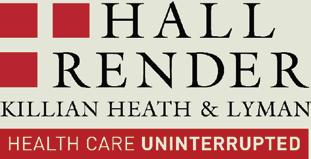
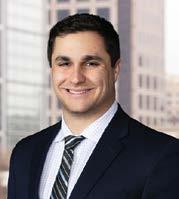











by Brandon Kulwicki and Chandani Patel, Attorneys with Hall, Render, Killian, Heath & Lyman, P.C.
regarding Artificial Intelligence (AI) in clinical practice is the potential liability if AI performs poorly. This issue is complicated by the shared clinical decision-making from AI between the patient, the physician, and the algorithm. Determining liability in these cases will likely depend on judicial decisions, though some federal agencies have already started considering the issue. Currently, there is limited case law on AI-related liability in healthcare, as medical AI is relatively new, and few AI personal injury claims have been decided by courts.
Medical malpractice liability is traditionally evaluated based on whether a physician meets or deviates from the standards of care. If a physician’s treatment falls below these standards, they can be held liable for malpractice. When AI is involved, the key question is whether the physician should be expected to detect errors made by the algorithm. If a physician cannot foresee how an AI makes decisions, the concern will be that the physician is supplementing their own medical judgment for an unknown algorithm. However, if the physician can foresee an error and fails to prevent it, they could be liable for any injury suffered by the patient.
As AI is a new technology, the tort law governing it is still evolving. To prove medical malpractice, a breach of duty of
care, and deviation from the standard of care generally must be demonstrated. In the context of AI, negligence could stem from programming failures, insufficient supervision, physician errors or mistakes by the AI itself. Liability could also arise if physicians rely on AI when best practices suggest an alternative approach. However, assigning liability can be challenging, especially when algorithms, which are opaque or “black boxes,” make it hard to pinpoint the exact cause of errors. This difficulty may cause difficulty in linking errors to harm, complicating claims.
Hospitals implementing AI decision support systems may face difficulties if physicians cannot identify errors and are forced to rely on the AI system. The degree of control over AI is also a key factor in determining liability. When AI operates autonomously and self-updates, the responsibility may partially fall on the AI developer. If human intervention is necessary, then liability may shift toward clinicians or developers who could have prevented the error. In cases where clinicians or developers have the ability to avoid accidents, liability may be clearer. However, in cases where AI systems make diagnoses or treatment decisions independently, fault may be attributable, at least in part, to the AI developer.
Another potential framework for addressing AI-related liability is product liability, which holds manufacturers accountable for defects in their products. In this model, manufacturers are presumed responsible if their product causes harm. However, applying product liability to AI is complex because the algorithm causing harm may differ from its original form, as AI systems evolve and improve over time. Additionally, as with medical malpractice liability, the “learned intermediary” exception suggests that intermediate users, like healthcare professionals, could be held responsible if they had the chance to review the product and detect errors before patient treatment.
In traditional product liability, plaintiffs must prove that the defendant owed a duty of care, breached the standard of care, and caused the injury. However, applying these principles to AI is challenging, as software is intangible. Courts are reluctant to use product liability doctrines for AI-related claims, and in many states, plaintiffs must show that a safer design existed and that the injury was foreseeable. This is particularly difficult in AI cases, as plaintiffs lack access to the “black box” of AI systems, making it hard to prove that an alternative design could have prevented the injury or that deviations were “unreasonable.” DMJ
This article is educational in nature and is not intended as legal advice. Always consult your legal counsel with specific legal matters. If you have any questions or would like additional information about this topic, please contact Brandon Kulwicki at (214) 615-2025; Chandani Patel at (214) 615-2037; or your primary Hall Render contact.
Brandon Kulwicki and Chandani Patel are attorneys with Hall, Render, Killian, Heath & Lyman, P.C., a national law firm focused exclusively on matters specific to the healthcare industry. Please visit the Hall Render Blog at http://blogs.hallrender.com/ for more information on topics related to healthcare law.









11 days after appendectomy, tests for acute abdominal pain revealed a









left inside the patient.

Surgical miscounts are considered never events because they are usually preventable by following established procedures.
ProAssurance offers risk assessments designed to help practices minimize errors by establishing and evaluating safety procedures and communication protocols.
With reliable procedures in place, our insureds are more likely to reduce errors in their medical practice, avoid claims, and make claims more defensible if they do occur.

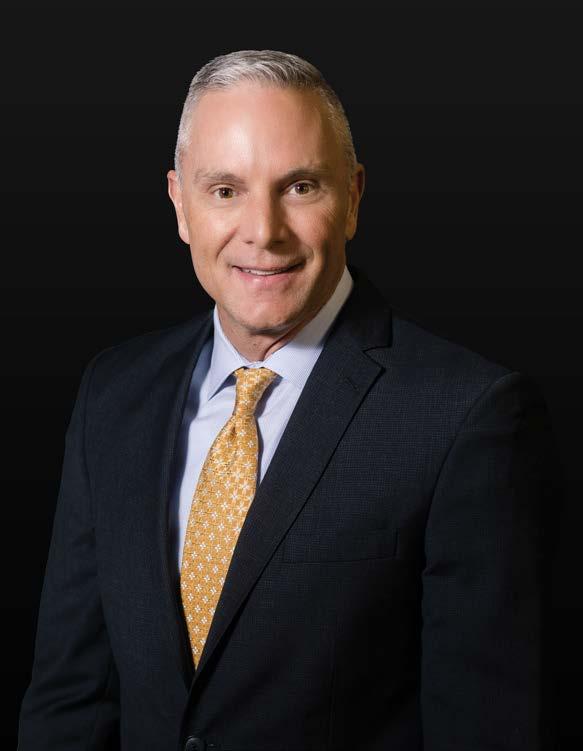
Jon R. Roth, MS, CAE
AS PHYSICIANS, YOU FIND YOURSELVES PRACTICING in an era of unprecedented legal complexity. The intersection of medicine and law has evolved from a relatively straightforward relationship to an intricate web of regulations, liabilities, and compliance requirements that touch every aspect of patient care. This evolution demands a new approach to medical practice—one that incorporates legal counsel as an essential component rather than a reactionary measure when troubles arise.
The data speaks for itself: physicians now spend an average of 11% of their career with an open malpractice claim against them. The mean indemnity payment has risen to over $300,000 in recent years, with some specialties facing substantially higher figures. Beyond malpractice concerns, today’s physicians must navigate HIPAA compliance, changing
reimbursement models, employment contracts, and a host of regulatory requirements that carry significant penalties for non-compliance. Fortunately, in 2003, the Texas Legislature passed House Bill 4, also referred to as the Medical Malpractice and Tort Reform Act. This tort reform capped the damages victims of medical malpractice can receive, including a $250,000 cap on noneconomic damages such as pain and suffering.
The practice of medicine has always carried legal implications, but several factors have intensified these considerations. The transition from fee-for-service to value-based care models has introduced complex contractual arrangements and performance metrics that affect compensation and require careful scrutiny. Meanwhile, the digital transformation of healthcare has created new legal vulnerabilities related to data privacy, cybersecurity, and electronic health record documentation.
Regulatory oversight has expanded dramatically as well. The Office of Inspector General, the Centers for Medicare and Medicaid Services, and state medical boards have all increased enforcement actions against physicians. Between 2019 and 2024, federal healthcare fraud settlements totaled over $15 billion, with individual physicians increasingly named as defendants rather than just their organizations.
This changing landscape requires not just awareness but active management of legal risks. As Dr. Eleanor Richards, Chief of Surgery at Metropolitan University Hospital, noted in a recent interview: “Twenty years ago, I could focus almost exclusively on surgical techniques and patient outcomes. Today, I need to be equally conversant in consent law, documentation requirements, and regulatory compliance—or have someone on speed dial who is.”
While malpractice traditionally dominates discussions of medical-legal issues, today’s physicians face a broader array of legal challenges: Employment and contracting issues have grown more complex as physician employment models continue to evolve. Non-compete clauses, compensation formulas, and termination provisions require careful review and negotiation. A poorly structured contract can impact a physician’s career and financial well-being for years.
Compliance requirements demand ongoing attention and documentation. From Medicare billing rules to state-specific prescribing regulations, the administrative burden of compliance has grown substantially. Violations—even unintentional ones—can trigger investigations, penalties, and potential exclusion from federal healthcare programs.
Digital health innovations create new liability questions around telehealth practice, remote monitoring, and AI-assisted diagnosis. The legal standards in these areas remain in flux, creating uncertainty for early adopters of new technologies.
Evolving standards of care shift continuously with new research, guidelines, and technologies. Staying current with the legally recognized standard of care requires constant vigilance and adaptation of practice patterns.
These concerns extend across all practice settings—from solo practitioners to large health systems—though they manifest differently depending on context. As one legal expert observed, “Solo
practitioners often lack institutional resources for compliance but have greater control over their practice decisions. Hospital-employed physicians have compliance infrastructure but may face pressures that create legal tensions between employer expectations and their professional judgment.”
The traditional approach to legal issues in medicine has been largely reactive—seeking counsel only when problems arise. This approach is increasingly insufficient in today’s environment. Proactive legal guidance offers several advantages:
Risk identification before issues materialize allows for prevention rather than damage control. Many legal pitfalls can be avoided through proper protocols, documentation, and practice structures identified by legal counsel familiar with healthcare regulations.
Contract review and negotiation requires specialized knowledge of healthcare law. Standard business attorneys may miss healthcare-specific implications of contract provisions related to compliance, referrals, and quality metrics.
Compliance program development benefits from legal input to ensure that policies and procedures meet current requirements and are practically implementable in clinical settings.
Practice transitions—whether starting a new practice, joining an existing group, or planning for retirement—involve complex legal considerations around entity formation, buying/selling practices, and succession planning.
The growing complexity of these issues has given rise to healthcare attorneys who specialize in representing physicians rather than institutions. These specialists understand both the legal and clinical contexts in which physicians operate, allowing them to provide practical guidance that balances legal protection with clinical realities.
Incorporating legal counsel into medical practice requires a strategic approach. Most physicians will benefit from establishing a relationship with a healthcare attorney before urgent issues arise. This relationship might take several forms:
Retainer arrangements provide ongoing access to legal advice for routine questions without the concern of hourly billing for every inquiry. This model encourages physicians to seek guidance on small issues before they become significant problems.
As-needed consultation works well for specific matters like contract review or responding to patient complaints or adverse events. Having an attorney already familiar with your practice makes these consultations more efficient.
Annual legal check-ups allow for review of policies, procedures, and compliance programs to ensure they remain current with changing regulations and case law.
When selecting legal counsel, physicians should consider attorneys with specific healthcare experience rather than general practitioners. Healthcare law has become sufficiently specialized that generalists may miss important nuances. DCMS can help you identify local healthcare attorneys as a member benefit by contacting DCMS staff.
Some physicians view legal counsel as an unnecessary expense, particularly when balancing already tight budgets. However, the financial calculus increasingly favors proactive legal guidance. The average cost of defending a malpractice claim—even one that results in no payment—exceeds $30,000. A single regulatory violation can result in five-figure penalties,
while systematic non-compliance can lead to exclusion from Medicare and Medicaid.
Beyond direct costs, legal issues consume something even more valuable to physicians: time and focus. Hours spent responding to complaints, preparing for depositions, or addressing compliance investigations represent time away from patient care and practice development.
Moreover, proper legal counsel often identifies opportunities as well as risks. Physicians with knowledgeable legal advisors are better positioned to take advantage of new payment models, technology implementation incentives, and practice innovation opportunities.
The practice of medicine has always balanced art, science, and ethics. In today’s environment, legal considerations have become an equally important dimension of medical practice. Just as physicians would not attempt complex procedures without proper equipment and training, navigating today’s medical-legal landscape requires specialized expertise.
By integrating legal counsel into their professional resources, physicians can protect their practices, their patients, and their professional futures. Rather than viewing legal guidance as a necessary evil, forward-thinking medical professionals recognize it as an essential component of modern practice—one that allows them to focus more confidently on their primary mission of patient care in an increasingly complex healthcare system. DMJ

Jon R. Roth, MS, CAE DCMS EVP/CEO


Join your peers who have completed more than 1 million free continuing medical education (CME) courses with Texas Health Steps Online Provider Education. Choose from over 50 CME courses developed by Texas experts for experts like you. Topics include Medicaid guidelines, ethics, mental health and more. Quick courses, case studies and resources are also available 24/7.
St. Paul Medical Clinic is bringing faith-based healthcare to an underserved community in Dallas, thanks to the passion and dedication of two DCMS members.
IN A MODEST SPACE AT THE ST. VINCENT DE PAUL center in Lancaster, something remarkable is happening. Patients wait in a small but welcoming reception area, many of them uninsured, undereducated, and accustomed to being told “no” by healthcare systems. But here, they’re greeted warmly by volunteers who know them by name, offered thorough medical care, and treated with dignity.
This is St. Paul Medical Clinic, a labor of love founded by Dr. Jeffrey Thompson, a nephrologist, and his wife, Dr. Mayra Thompson, an OB-GYN specializing in minimally invasive surgery. Their mission is to provide affordable, quality healthcare with a Catholic foundation to those who need it most.
“About seven years ago, Bishop Edward Burns of Dallas was at one of the Catholic medical guild meetings, and we were
complaining about the lack of Catholic medical care facilities in Dallas,” Dr. Jeffrey Thompson explains. “Ever since St. Paul Hospital closed, there has not been a Catholic healthcare facility in Dallas. Dallas is the fourth largest metroplex in the country and the only one of the top 20 that has no Catholic health care facility.”
Bishop Burns challenged them to do something about it, and they took up the gauntlet.
Initially, the Thompsons considered opening a hospital, but they quickly recognized the practical challenges of competing with Dallas’s large healthcare systems. They shifted their focus to creating a clinic and began researching successful models across Texas, visiting facilities in Houston, Fredericksburg, and Round Rock.
One key insight emerged from these visits: charging a small fee, rather than providing completely free care, resulted in better outcomes and patient engagement. “People hear ‘free clinic’ and
think ‘cheap clinic’ or ‘lousy clinic,’” Dr. Thompson notes. The St. Paul Medical Clinic charges modest fees, helping patients feel invested in their care while keeping services affordable.
The path from concept to working clinic wasn’t always smooth. After the pandemic temporarily halted their progress, the Thompsons regrouped in 2021 and began collaborating with Father Arthur Unachukwu of Holy Cross Parish and Hank Hermann, the founder of the St. Vincent de Paul pharmacy, an innovative operation providing medications for free to uninsured patients whose household income is less than 300% of the federal poverty level.
Their initial plan to locate at Holy Cross Parish hit a roadblock when they were told they would need to rezone the property for commercial use. After holding community events and investing significant effort at
Holy Cross, they reluctantly began looking elsewhere.
That’s when they discovered the available space at the St. Vincent de Paul center in Lancaster. Dr. Mayra Thompson recalls, “We came out here and met with Dr. Hill, who was the director here, and she was very welcoming. And they had this space. Literally, we’ve not had to do much to the space other than put furnishings in.”
The contrast with their previous location was stark. At Holy Cross, renovations would have cost $150,000 to $160,000 at minimum, with some estimates running as high as $3 million. The St. Vincent de Paul location required virtually no renovation costs.
After navigating lease negotiations and setting up their facility, St. Paul Medical Clinic opened in December 2023, starting with just two clinic days per month. “It didn’t seem like much, but I was glad we did that because it took a while to get things running more smoothly,” says Dr. Mayra Thompson. “Opening up with just two days a month gave us an opportunity to work out the difficulties we encountered.”
Today, the clinic operates four days per month – two Saturdays and two Wednesdays, with one Saturday dedicated to diabetic education. They have approximately 178 patients on record, with many requiring regular monitoring for conditions like diabetes. They have a website, www.stpaulmed.org, which the patients can review the requirements, procedures to enroll, and the services provided.

The clinic has already secured some important partnerships. ProPath Laboratories provides laboratory testing for their patients, though they’re still seeking a radiology partner. Several specialists in the community have agreed to see St. Paul patients in their own offices, including cardiologists, surgeons, endocrinologists, ENTs, and allergists.
Word of mouth has become their most effective recruitment tool. When asked how they heard about the clinic, patients often respond that friends told them they should go there because “they’re very nice, and they’re thorough. They take care of you and they treat you with respect.”
Dr. Mayra Thompson, who was born in Veracruz, Mexico and grew up in Chicago before attending Northwestern University and the University of Illinois Medical School, brings a special understanding to many of the clinic’s patients. “One thing that has amazed me is the volunteers,” she says. “They’re super dedicated. They’re very dedicated. And we have the best volunteers.”
What sets St. Paul Medical Clinic apart from other community health resources is its Catholic foundation. The Thompsons were inspired to create the clinic after participating in medical mission trips to Honduras.
“As we traveled the whole day to get to our mission area, I was looking around. Yes, these people were needing,” Dr. Mayra Thompson recalls. “But I thought South Dallas has the same need, and why are we going this far and not addressing the people in our backyard?”
She continues, “We wanted something that was religiously based because we felt that it was our Lord Jesus who called us
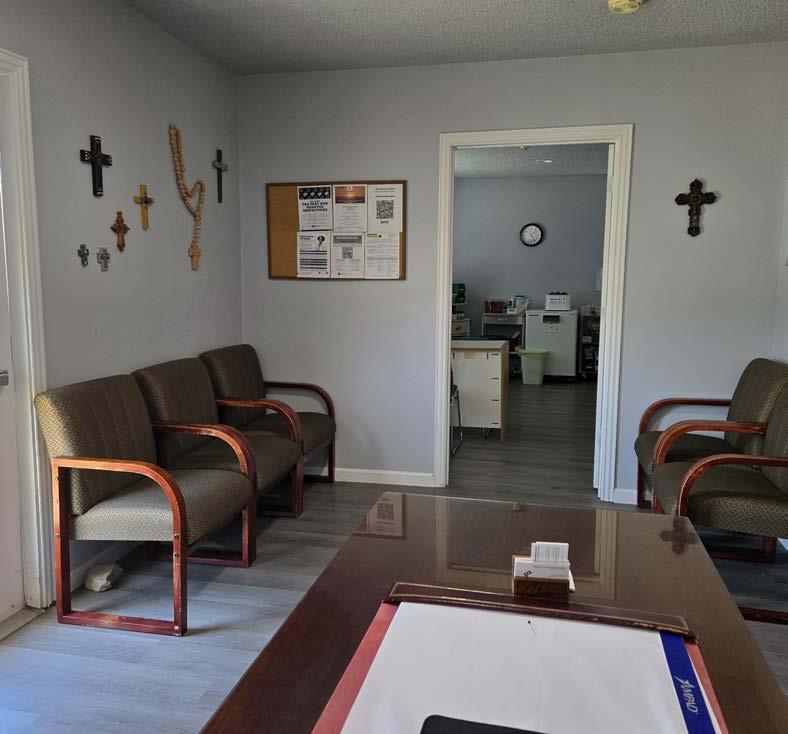

to do this as the first healer, the ultimate healer. Yes, there are many federally qualified clinics in the city that are successful in treatment and follow-up with their patients, but the one thing that we fulfill that they don’t is the special love that I think our patients feel—that they are not alone, they’re not a victim of society or the government, but they are loved by a person who is a human like them and is called to serve them through our Lord.”
Despite their success, the clinic faces several challenges. They’re still seeking an electronic health record system after being turned down twice. They need a hospital partner for patients requiring surgery or hospitalization. And they need more volunteers—both medical professionals and support staff—to expand their operations.
Perhaps their biggest clinical challenge is diabetes management. In their early screenings, approximately 80% of patients had diabetes or prediabetes. “That’s our biggest challenge right here,” says Dr. Thompson, noting that many patients have dietary habits that are difficult to change.
The Thompsons have a message for their fellow DCMS members:
“Remember when you started medical school, your dream to go to medical school, how you wanted to help the poor, the underserved,” Dr.
Mayra Thompson urges. “You get caught up in medicine, family, financial commitments, and everything. You get to the point where you’ve succeeded, but don’t you want to recall the reason you went in?”
Their request is simple: “Can you give us some time every quarter, where you can come and share in the beauty of being fulfilled before it’s too late and you die, and you never gave it? If we all in the city of Dallas gave a day every quarter, especially those that are retired, but those that aren’t retired, if you gave a day every quarter and brought your teenage kid to come and help, wouldn’t that be great?”
The Thompsons believe the rewards far outweigh the sacrifice. “You’ll get more back than you put in,” they promise.
For doctors who can’t volunteer time at the clinic, they suggest opening their practices to occasional St. Paul patients. For hospital administrators, they extend an invitation to partner with them. And for those who are neither medical professionals nor administrators, they welcome financial support.
“For those of you who aren’t medical professionals, we’ll take your check,” Dr. Jeffrey Thompson jokes.
The Thompsons envision a future with three or four similar clinics throughout Dallas, connected through an appointment scheduling app and working in close partnership with St. Vincent de Paul. But for now, they’re focused on growing their current operation carefully, maintaining their reputation for quality care, and developing a model that can be reproduced.
“We’ll do more for our community through that than any insurance plan can do,” Dr. Mayra Thompson asserts. “Join us. You’ll have a good time.” DMJ

by Brandon Kulwicki and Chandani Patel, Attorneys with Hall, Render, Killian, Heath & Lyman, P.C.
ARTIFICIAL INTELLIGENCE (AI) GENERALLY
refers to the ability of computers to perform tasks based on human reasoning. It can enhance decision-making and efficiency through methods like rule-based learning, machine learning, and deep learning. In healthcare, AI is primarily used in clinical decision support, medical imaging, and drug discovery. However, the AMA House of Delegates prefers the term “augmented intelligence” to describe AI in a way that highlights its supportive role, emphasizing that its design should enhance human intelligence rather than replace it.
In medical settings, AI supports clinical decision-making by providing quick access to information and research that guide decisions on treatments, medications, and patient care. Current uses of AI in healthcare include real-time clinical transcription, answering routine patient questions via chatbots, drafting personalized education materials, and predicting adverse clinical outcomes based on vital signs. Specialists use AI for tasks like detecting arrhythmias or ischemia through ECG analysis, identifying malignant melanomas, and optimizing embryo selection in in vitro fertilization (IVF). AI can also accelerate time to treatment by identifying critical findings in emergency departments, monitor patient vital signs, and suggest diagnoses based on tissue samples.
While AI has transformative potential, it raises cybersecurity and ethical concerns. AI systems require large datasets, which increases the risk of data breaches. The complexity of
AI algorithms also opens the door to manipulation, potentially leading to misdiagnoses or wrong treatment recommendations. Continuous data exchange between systems can make healthcare networks vulnerable to cyberattacks, necessitating robust data privacy protocols to safeguard patient information. Current regulations like HIPAA, which was established before AI became widely used, may not fully address modern data challenges. With the growing adoption of AI, it is crucial to develop strong legal frameworks and risk management practices to address these cybersecurity challenges. This also requires a comprehensive understanding of the risks and challenges of AI usage across all healthcare disciplines in order to minimize the risk of liability and ensure compliance with evolving AI regulations. Transparency in clinical decision-making is essential when utilizing AI technologies, but many AI models are “black boxes” that, due to proprietary or technical reasons, cannot be explained. This lack of transparency could damage trust in the recommendations, diminishing patient autonomy by requiring them to make decisions without fully understanding the relevant information. Additionally, the use of black box models makes it difficult to identify biases that may lead to worse outcomes for underrepresented or marginalized groups, even in theoretically fair models. Some AI systems also rank treatment options from best to worst, implicitly making value judgments about the patient’s best interests. In particular, AI algorithms heavily rely on training data, and if this data is biased or unrepresentative of diverse populations, it can further exacerbate healthcare disparities. However, vetting AI vendors is difficult because AI platforms are
often unwilling to disclose the underlying algorithms or datasets, and healthcare professionals may lack the technical expertise to evaluate these products. To address these issues, it is essential that AI tools be “explainable,” ensuring that they are accurate, fair, diverse, and transparent. This includes asking key question about the AI vendor’s governance policies, data used for training, performance validation, and how patient information is protected.
Clinicians remain responsible for delivering quality patient care and must ensure that AI recommendations are integrated appropriately. Maintaining informed consent is a key way to ensure transparency in care. Clinicians must ensure that patients understand their diagnoses, treatment options, and potential risks, with consent given voluntarily and informed by clear communication. To help facilitate disclosure, providers should clearly document their AI usage, especially as it informs their decision-making, treatment plans, and interactions with patients. As AI continues to play a larger role in healthcare decisionmaking and administration, clinicians must ensure that AI supports, rather than replaces, their independent medical decisions.
Physicians and other healthcare professionals must also understand how the standard of care can change with assistive AI utilization. While tort law is still evolving under an increasingly AI-centric world, healthcare professionals’ duty of care to their patients, at its core, will remain relatively constant; for example, providers must continue to prioritize patient-centered care that respects autonomy, promotes informed choices, and upholds core patient values like privacy, confidentiality, fairness, and the principles of beneficence (doing good) and non-maleficence (avoiding harm). Despite the value of AI in supporting clinical tasks, it cannot replace the essential human qualities of empathy and compassion, which are central to building trust and improving patient outcomes. In sensitive specialties like obstetrics, pediatrics, and psychiatry, patients expect emotional understanding in their care, and AI should not undermine this relationship.
Currently, there is no comprehensive national policy or governance structure to guide the development and use of non-medical device AI, including AI technologies with clinical applications. While the FDA regulates AI-enabled medical devices, many AI technologies, such as those used for clinical decision support, fall outside of its oversight. Other entities, like the FTC and OCR, have some regulatory authority, but their powers are limited and insufficient in providing the robust regulation of AI development and deployment that the administration of effective, quality care requires. Establishing AI ethics boards, guidelines, and standards will play a key role in shaping the future of AI use in healthcare, ensuring that risks to patients and
SOURCES
consumers are minimized. In addition to government regulation, healthcare institutions, practices and professional societies are responsible for overseeing AI-enabled systems. Purchasers and users of these technologies must ensure adherence to current and evolving standards of care; clinical specialists will continue to play a key role in monitoring and validating the quality and clinical relevance of AI tools through continuous feedback loops. Validation should involve experts with a transdisciplinary perspective who understand both the technical and humanistic challenges of medical AI.
Additionally, healthcare workers need AI literacy, which should be incorporated into medical curricula, and there should be specialized training in “digital medicine” to create expertise in AI-based case management and facilitate collaboration with developers and users to ensure safer implementation practices. While AI has made significant strides in fields like radiology, pathology, and dermatology, where its diagnostic capabilities can rival or even surpass human clinicians, research suggests that collaboration between physicians and AI is more effective than either one working alone. It is unlikely that AI will completely replace physicians, as human qualities such as empathy, critical thinking, and complex decision-making are essential for providing holistic care. Instead, AI is expected to enhance, rather than supplant, the practice of medicine, empowering physicians to deliver better care while reducing burnout by automating routine tasks. AI can also help address healthcare access issues and clinician shortages that are prevalent across the country right now.
The integration of augmented intelligence into healthcare presents both exciting opportunities and significant challenges. While AI has the potential to enhance clinical decision-making and improve operational efficiencies, it is crucial that its development and deployment be guided by clear ethical principles, rooted in transparency and subject to robust oversight. The use of augmented intelligence will require transdisciplinary involvement and understanding of the policies, standards, and frameworks that govern the delivery of healthcare as it exists today and as it evolves over time. While the future of AI’s role in healthcare is a mystery now, its usage must continue to prioritize patient safety, data privacy, and human values, with a strong emphasis on collaborative, compassionate, and highquality care.
DMJ
This article is educational in nature and is not intended as legal advice. Always consult your legal counsel with specific legal matters. If you have any questions or would like additional information about this topic, please contact Brandon Kulwicki at (214) 615-2025; Chandani Patel at (214) 615-2037; or your primary Hall Render contact.
Brandon Kulwicki and Chandani Patel are attorneys with Hall, Render, Killian, Heath & Lyman, P.C., a national law firm focused exclusively on matters specific to the healthcare industry. Please visit the Hall Render Blog at http://blogs.hallrender.com/ for more information on topics related to healthcare law.
Aagaard, Lise. “Artificial Intelligence Decision Support Systems and Liability for Medical Injuries.” Journal of Research in Pharmacy Practice, U.S. National Library of Medicine, 8 Oct. 2020, pmc.ncbi.nlm.nih.gov/ articles/PMC7808182/#:~:text=%5B7%5D%20Hospitals’%20implementation%20of,and%20safety%20of%20these%20algorithms. “Artificial Intelligence in Healthcare: New Avenues for Liability.” Morrison Foerster, www.mofo.com/resources/insights/240304-artificial-intelligence-in-healthcare. Accessed 20 Feb. 2025. “Augmented Intelligence in Medicine.” American Medical Association, 12 Feb. 2025, www.ama-assn.org/practice-management/digital/augmented-intelligence-medicine. Cestonaro, Clara, et al. “Defining Medical Liability When Artificial Intelligence Is Applied on Diagnostic Algorithms: A Systematic Review.” Frontiers in Medicine, U.S. National Library of Medicine, 27 Nov. 2023, pmc.ncbi. nlm.nih.gov/articles/PMC10711067/#:~:text=A%20significant%20determinant%20is%20the,and%20conditions%20of%20AI%20device. Farhud, Dariush D., and Shaghayegh Zokaei. “Ethical Issues of Artificial Intelligence in Medicine and Healthcare.” Iranian Journal of Public Health, U.S. National Library of Medicine, Nov. 2021, pmc.ncbi.nlm.nih.gov/ articles/PMC8826344/. Future of Health: The Emerging Landscape of Augmented, www.ama-assn.org/system/files/future-health-augmented-intelligence-health-care.pdf. Accessed 20 Feb. 2025. Greggwirth. “Understanding the Advantages and Risks of AI Usage in Healthcare.” Thomson Reuters Institute, 18 Nov. 2024, www.thomsonreuters.com/en-us/posts/technology/ai-usage-healthcare/. IBM. “What Is Artificial Intelligence in Medicine?” IBM, 23 Jan. 2025, www.ibm.com/think/topics/artificial-intelligence-medicine. James, Ted A. “How Artificial Intelligence Is Disrupting Medicine and What It Means for Physicians.” How Artificial Intelligence Is Disrupting Medicine and What It Means for Physicians | HMS Postgraduate Education, 13 Apr. 2023, postgraduateeducation.hms.harvard.edu/trends-medicine/how-artificial-intelligence-disrupting-medicine-what-means-physicians. Price, W. Nicholson. “Risks and Remedies for Artificial Intelligence in Health Care.” Brookings, 14 Nov. 2019, www.brookings.edu/articles/risks-and-remedies-for-artificial-intelligence-in-health-care/. Quinn, Thomas P., et al. “Trust and Medical Ai: The Challenges We Face and the Expertise Needed to Overcome Them.” Journal of the American Medical Informatics Association: JAMIA, U.S. National Library of Medicine, 18 Mar. 2021, pmc.ncbi.nlm.nih.gov/articles/PMC7973477/#:~:text=Failures%20in%20medical%20AI%20could%20erode%20public%20trust%20in%20healthcare.&text=Such%20failure%20could%20 occur%20in,detected%20by%20explicit%20algorithmic%20defenses. Understanding Liability Risk from Healthcare AI - Stanford Hai, hai.stanford.edu/sites/default/files/2024-02/Liability-Risk-Healthcare-AI.pdf. Accessed 20 Feb. 2025. Yelne, Seema, et al. “Harnessing the Power of AI: A Comprehensive Review of Its Impact and Challenges in Nursing Science and Healthcare.” Cureus, U.S. National Library of Medicine, 22 Nov. 2023, pmc.ncbi.nlm.nih. gov/articles/PMC10744168/.
by Darrell Armer, Rachel Poynter, Kristi Harbord, and Gray Reed
General of the U.S. Department of Health and Human Services’ (the “OIG”) Special Fraud Alert issued December 11, 2024, marketing arrangements involving physicians remain a focus of federal regulators. While this particular alert specifically addresses the Medicare Advantage program, the underlying principles are pertinent to all marketing arrangements and are consistent with enforcement trends across the industry. In setting forth its concerns, the OIG referred to these marketing arrangements as “schemes,” “marketing schemes,” “abusive compensation arrangements,” and “abusive marketing practices,” and characterized the payments to physicians as not only problematic but “lucrative.” It is against this backdrop, and knowing that a problematic marketing arrangement can lead to criminal, civil, and administrative liability (e.g., exclusion), that a cautious, thorough, and diligent approach is required.
In this increasingly complex healthcare landscape, physicians are often approached with offers to participate in various marketing-related arrangements: speaking engagements and consulting roles with pharmaceutical, medical device, and healthcare service companies; service agreements with lead-generation or online service providers; and arrangements involving the disclosure of protected health information for marketing or fundraising purposes. While these and similar arrangements may have a beneficial purpose, they also come with regulatory and ethical obligations that require thoughtful evaluation. Understanding the relevant regulations is essential to ensure that participation complies with applicable laws and professional standards.
At the federal level, the Anti-Kickback Statute (the “AKS”) plays a key role in regulating marketing activities. It prohibits offering or accepting any remuneration to induce or reward the referral of items or services payable by federal healthcare programs. The law casts a wide net: remuneration includes money, gifts, discounts, or any other form of benefit. In a nonhealthcare setting, one party will often compensate another party based on the amount of business that the other party generates. But in healthcare, and specifically with respect to physicians, different rules apply.
Because the AKS is a criminal statute, the government must establish that the defendant acted with the requisite intent. Courts have generally held that the AKS is violated where any purpose, not necessarily the principal purpose, of a payment is to induce referrals, known as the “one purpose test.” In light of the broad prohibition of the AKS, the OIG promulgated a number of safe harbors. The safe harbors have specific conditions that, if met, protect arrangements from liability. For example, under the personal services and management contracts safe harbor (which, along with the bona fide employee safe harbor, are the two safe harbors most utilized in analyzing marketing arrangements), a legitimate contract must be in writing, signed, cover all services provided, last at least one year, and clearly spell out compensation based on fair market value (“FMV”), unrelated to the volume or value of referrals.
In reviewing marketing arrangements that do not fit within the personal services safe harbor, the OIG has identified a list of factors it deems “suspect,” including the following: (1) compensation based on percentage of sales; (2) success fees, compensation based on a percentage of revenue or compensation that reflects the generation of new business; (3) use of sales agents who are health care professionals; (4) direct billing of a federal health care program by the seller for the item or service sold by the sales
agent; (5) direct contact between the sales agent and the physician in a position to order items or services that are paid for by a federal health care program; (6) direct contact between the sales agent and federal health care program beneficiaries; (7) marketing of items or services that are separately reimbursable by a federal health care program (e.g., items or services that are not included in a bundled rate); and (8) the degree to which the marketing activities may be coercive or perceived to be coercive. The absence of any one factor does not necessarily mean that the arrangement is permissible under the AKS, but the more factors that are present, the greater the amount of scrutiny the arrangement will likely receive.
In addition to federal laws, many states have additional restrictions. Texas has an anti-kickback law that applies more broadly and covers all payors (not just Medicare and Medicaid), and a commercial bribery law that prohibits a “fiduciary” from receiving a benefit that will influence the conduct of the fiduciary. The Forest Park Medical Center case is a familiar example of what not to do. There, physicians received marketing payments that were essentially disguised referral fees for beneficiaries covered by commercial insurance. That case involved the federal Travel Act, which prohibits using interstate commerce to facilitate unlawful activities, including violations of state anti-kickback and commercial bribery laws. Often, parties to an arrangement believe that carving out federal payors will reduce risk of enforcement, but this case makes clear that engaging in prohibited referral practices under state law could lead to federal prosecution in addition to state-level penalties.
In addition to the fraud and abuse considerations, marketing activities involving patient data comes with another set of challenges under the Health Insurance Portability and Accountability Act (“HIPAA”). Generally, any marketing that uses protected health information (“PHI”) requires written authorization from the patient, unless an exception applies. For example, communications about refill reminders or treatment options are typically permissible if they are not paid for by a third party. If a third-party vendor is involved and has access to PHI, a Business Associate Agreement must be in place. It is also a best practice to ensure vendors understand HIPAA requirements and maintain solid data protections.
When a physician group hires employees to promote their services, there is less risk from an AKS state kickback law perspective. Under the AKS, remuneration does not include amounts paid by an employer to a bona fide employee for employment in the furnishing of any item or service for which payment may be made under Medicare, Medicaid, or other federal healthcare programs. This means that payments, even variable payments, to employees are generally exempt from AKS liability, provided the employment relationship is genuine and the compensation is for services actually rendered. That said, it is still important to ensure that any marketing employees participate in compliance and privacy training, and that this training be documented.
• Does the role align with your clinical background and expertise?
• Is the compensation documented, reasonable, and clearly not tied to referrals?
• Are the duties and time commitments clearly defined in writing?
• Does the arrangement fit a safe harbor?
• Has the vendor’s compliance record been checked, including OIG exclusion status?
Partnering with vendors or referral sources, particularly where variable compensation is involved, is more problematic. The OIG has issued several warnings over the years, flagging arrangements where payments to vendors or physicians will be deemed tied to referrals. For example, telemedicine and lab arrangements have faced scrutiny, especially when providers are paid per prescription or order, regardless of necessity. If labs are paying physicians for services already covered by Medicare (such as through bundled payments) or offering benefits below market value, these arrangements could be viewed by the OIG as payments for referrals.
Furthermore, physicians considering arrangements involving the Medicare Advantage program should be aware of certain arrangements flagged by the OIG in the recent Special Fraud Alert. The Special Fraud Alert focused on two types of remuneration: payments from Medicare Advantage Organizations to health care professionals (“HCPs”), and payments from HCPs (including payments from corporations that contract with or employ HCPs and management services organizations with which HCPs contract) to agents, brokers, and others in exchange for referring Medicare enrollees to a particular HCP. The OIG outlined a list of suspect characteristics that present a heightened risk of fraud and abuse, including:
• Offering or paying HCPs or their staff remuneration (such as bonuses or gift cards) in exchange for referrals or recommendations.
• Remuneration disguised as payment for legitimate services but intended for referrals.
• Payments contingent on or varying based on the demographics or health status of individuals enrolled or referred.
• HCPs offering or paying remuneration to agents, brokers, or third parties to recommend or refer enrollees.
Marketing arrangements are not inherently bad. When structured properly, they can offer value without compromising ethical or legal obligations. But given the legal complexity, physicians should proceed with caution. A vendor offering overly generous or vaguely defined terms should be approached with skepticism. When in doubt, seek legal guidance and, if necessary, obtain a FMV opinion. A wellinformed, cautious approach minimizes risk and maximizes value for all parties involved. DMJ
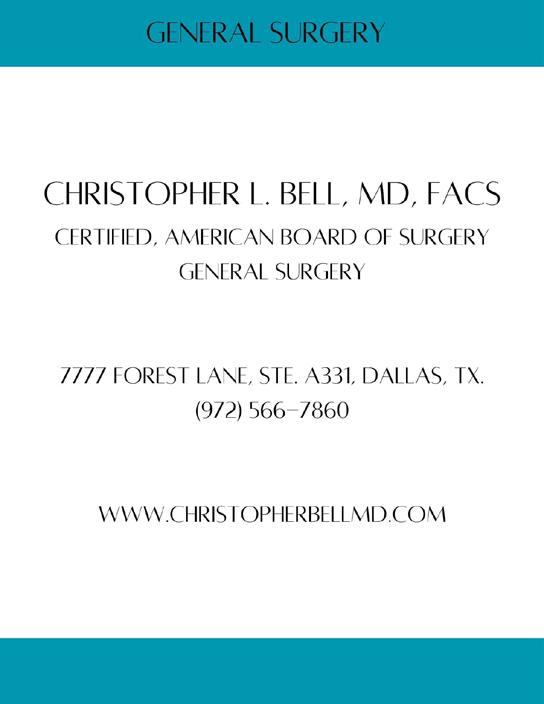


ROBERT D. GROSS, MBA, MD, a pediatric ophthalmologist from Dallas, and a past DCMS board member, was honored with the 2024 Distinguished Service Award by the Texas Ophthalmological Association (TOA). This accolade, the TOA’s highest honor, recognizes individuals who have demonstrated exceptional dedication to patient care and advocacy in the field of ophthalmology. The Dallas County Medical Society celebrates Dr. Gross’s achievement, highlighting his unwavering commitment to helping young patients improve their vision. Dr. Gross’s career spans clinical excellence, leadership, and education. He served as a founder and past chair of the Section on Ophthalmology of the American Academy of Pediatrics and as the past president of the Children’s Eye Foundation. His contributions to the field include over 40 peer-reviewed publications and textbook chapters.
He has received a number of awards, including a Special Recognition Award from the American Academy of Pediatrics (2015), the Senior Honor Award from the American Association for Pediatric Ophthalmology and Strabismus (2017), and the Secretariat Award from the American Academy of Ophthalmology (2024). He has served on the clinical faculty in the Department of Ophthalmology at UT Southwestern for 35 years and on the DCMS Board of Directors (2020-22) and Legislative and Communications committees.
The Texas Ophthalmological Association, established in 1956, is a nonprofit organization dedicated to advancing the science and art of medical eye care. With a membership of approximately 844 ophthalmologists, the TOA provides continuing medical education programs and represents its members in various legislative and regulatory bodies, including the U.S. Congress and the Texas Legislature. The organization’s Distinguished Service Award serves to honor those who have made significant contributions to the field and have gone above and beyond in caring for and advocating for ophthalmology patients.
Dr. Gross’s recognition by the TOA underscores his impactful career and steadfast dedication to pediatric eye care. His efforts have not only advanced the field of ophthalmology but have also profoundly improved the lives of countless young patients. DMJ


On behalf of the DCMS Foundation, we are deeply grateful for the incredible generosity of our donors. Your remarkable support fuels our mission and makes everything we do possible. Thank you for standing with us—your commitment truly makes a meaningful difference in the lives of many.
$100,000+
Donna L. Casey, MD; Lisa Casey, MD; Ms. Mary Casey & Ms. Cindy Brown
Samuel J. Chantilis, MD
Richard W. Snyder, MD & Shelley A. Hall, MD
$50,000-$99,000
Donna L. Casey, MD & Gary L. Weinstein, MD
DCMS Alliance Foundation 'Beyond Duty' Gala
The Steven R. Hays, MD and Suzanne I. Ahn, MD Legacy Gift
$15,000-$49,000
Baylor Scott & White Health
Hoblitzelle Foundation
Methodist Health System
A. Joe Saad, MD and Rana D. Saad, PhD
Southwestern Medical Foundation
Roy & Christine Sturgis Charitable Trust, Bank of America, N.A., Trustee
Texas Health Resources Dallas
$10,100-$14,999
H. Gordon Green, MD
(in memory of Drs. James Black, James Homan, & AJ Gill)
Dr. Beth & Mr. Mick Kassanoff-Piper, MD
$5,100 - $10,000
Anesthesia Partners of Dallas, PLLC
Dr. Jack Bankhead
(In memory of Dr. AJ Gill)
Mark Casanova, MD
(in honor of Dr. Robert Fine & DCMS Staff )
Carolee D. Estelle, MD
Dr. & Mrs. Robert Haley
Laboratory Physicians Association
Lee Ann Pearse, MD
Mr. Jon and Ms. Liz Roth
Cynthia Sherry, MD and Dean Sherry, PhD
Lisa Swanson, MD
Ruben Velez, MD
$5,000
Dr. Jeffrey and Barbara Adelglass
Justin M. Bishop, MD
John Carlo, MD
Dr. Alex and Jeanie Chuang
Drs. Wendy M. and Andrew Chung
Dr. Maynard and Rosemarie Ewton
Robert L. Fine, MD, FACP, FAAHPM
Deborah Fuller, MD
Warren Lichliter, MD
Todd Moen, MD
Wendy Parnell, MD
Karl Rathjen, MD
TMA Insurance Trust
$1,000-$4,900
Robert K. Bass, MD
Sue Bornstein, MD
(in honor of Richard W. Snyder, II, MD)
James G. Brooks, Jr., MD
William Bruck, MD
Evangeline Cayton, MD
Drs. Tuoc Dao & Calvin Chan
Dr. & Mrs. Fred Ciarochi
BM Cohen Mb, Ch, B, MD
Gates Colbert, MD
Cindy Lou Corpier, MD
Randall Wayne Crim, MD
Dr. Stanley Feld
Sharon Gregorcyk, MD
Philip Huang, MD
Philip Huber, MD
County Judge Clay Lewis Jenkins
Drs. Rainer & Anita Khetan
William R. Lumry, MD
Dustin Manders, MD
Mary Moren-Favrat (in memory of Tony Favrat)
Dr. Lee and Mrs. Angelique Reagor
Richard Sachson, MD
Dr. Thomas Schlieve
Anil Kumar Tibrewal, MD
Dr. Charles and Barbara Van Duyne
Dr. Robert & Jane Viere
Dr. A. Worsham
$1,000
Cesar A. Albarracin, MD
American Muslim Women Physicians Association
Amy S. Anderson, MD & Paul A. Neubach, MD
Anonymous
Martin Russel Berk, MD
Sita M. Boppana, MD
Albert Broders, III, MD
Drs. John Gilmore & Linda Burk
Remigio Capati, MD
Drs. Ravi and Darshna Chandrasekhara
Michael & Anne Darrouzet
Joy Lo Chen & Albert Lo Donation Fund
Dr. M. Brett Cooper & Mr. Matthew Mirizzi
Kenneth H. Cooper, MD
Byron Cryer, MD
J. Michael Desaloms, MD
Shaina Drummond, MD
Dr. and Mrs. Robert Dyo
Dr. Paul & Macki Ellenbogen
Edwin Escobar-Vazquez, MD (in honor of DCMS Wellness Program)
Rebecca Euwer, MD
Mark Fleschler, MD
Jeri Beth Foshee, MD
Danielle Ford, MD
Dr. & Mrs. John R. Foster
Murray Gordon, MD
Amit Guttigoli, MD
Dr. J. Kent & Lynn Hamilton
Munir Hazbun, MD
H.A. Tillmann Hein, MD
Michelle M. Ho, MD
Dr. Joel and Wendy Holiner Family Philanthropic Fund of the Dallas Jewish Community Foundation
Rajeev Jain, MD
Rehana Kausar, MD
Ronald Kerr, MD
Roger Khetan, MD
Haskell Kirkpatrick, MD
Cheryl Cox Kinney, MD (in honor of Samuel Chantilis, MD)
Kevin Klein, MD
Dr. & Mrs. Stephen Landers (in honor of Donna Casey, MD)
Ann Marilyn Leitch, MD
Benjamin C. Lee, MD & Jodi D. Jones, MD
Alexandra Dresel Lovitt, MD
Kristi McIntyre, MD
Michael S. Milner, MD
Chander and Narinder Monga, MD
Thomas Neary
Dennis E. Newton, MD
Dr. Mel Platt
Matthew Pompeo, MD
Dr. R. Lynn & Cynthia A. Rea
Kim Rice, MD
Marcial Andres Oquendo Rincon, MD
Dr. Randall and Barbara Rosenblatt
Karen Roush, MD
Dr. L. Keith and Lori K. Routh
Thomas K. Russell, MD
Ann Heard-Sakhaee and Khashayar Sakhaee, MD
Terilyn Scott-Winful, MD
Linda and Les Secrest, MD
William Shutze, MD
The Physicians of Health Central Women's Care
Albert Tesoriero, MD
Dr. George and Carolyn Toledo
Christopher Vesy, MD
Bruce Wall, MD
Drs. Brad & Rebecca Weprin
Dr. Barry & Shana Wilcox Donor Advised Fund at Schwab Charitable
Elizabeth Wilder, MD
David Winter, MD
Megan M. Wood, MD (in memory of Dr. Alison Laidley)
Timothy N. Zoys, MD
$500-$999
Anonymous
Katrina Bradford, MD
Sheila Chhutani, MD
Stephanie Elmore, MD
Dr. & Mrs. Alan Frankfurt (in honor of Donna Casey, MD)
Grady G. Goodwin, MD
Robert Gross, MD
Richard Joseph, MD
Charles Levin, MD
Aekta Malhotra, MD
Maranatha R. Mclean, MD
Mark Miller, MD
John D. Minna, MD
Bruce Phillips, MD
William Stevens, MD
Laurie Jayne Sutor, MD
Brent Walker, DO
Dr. & Mrs. Peter Walling
Dr. William R. & Katie Weaver
Charitable Trust
Claudia Werner, MD
$0-$499
Anna Acuna and Elevance Health
Anonymous
Jean McClintock Bratcher, MD
Paul and Jackie Campbell (in memory of Tony Favrat)
Allan Chernov, MD
Stephanie Copeland, MD
Jason Davis, MD
Emma Dishner, MD
Pat Fox Fulgham, MD - Foundation for Urology Research & Education
Robert Garrett, MD (in honor of Donna Casey, MD)
Dr. Joe & Ann Gaspari
Elliot Ginchansky, MD
Jennifer Delia Heffernan, MD
Drs. Pratik Kapadia and Nazish Islahi
Thomas Myers, Jr.
Thomas W. Newsome, MD
David E. Ostrow, MD
Archana Rao, MD
Dr. Philip and Sandy Raskin
Wyatt Easterling Rousseau, MD
Charles Rubey, MD
Cedric Spak, MD
Charles Tandy, MD
Kim Vernon, MD
NEW DCMS HEADQUARTERS IN THE HEART OF UPTOWN








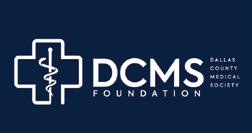

by Sherri Onyiego, MD, PhD
described as the future of medicine—a new way forward that promises better health outcomes, improved patient and provider experiences and reduced costs. For providers, it’s a vision of getting off the fee-for-service (FFS) “hamster wheel,” and into proactive, holistic patient care. Yet, much like the transition toward electronic health record (EHR) systems—another large-scale shift in our industry—turning this vision into reality has proven more complex than anticipated.
Although VBC has been a focal point in healthcare reform for more than a decade, its integration into primary care, the foundation of effective healthcare delivery, has been slower than expected. A recent report from the Commonwealth Fund sheds light on why adoption remains limited. While many primary care providers (PCPs) support the principles of VBC, concerns about its real-world execution persist—particularly around payment models that often fail to reflect the day-to-day realities of their practice.
According to a 2022 Commonwealth Fund survey, fewer than half (46%) of PCPs reported receiving any value-based payments. Many expressed a desire to move away from FFS and spend more time delivering thoughtful, preventative, patient-centered care. However, they’re finding that current VBC models are not structured in ways that support their widespread participation.
VBC doesn’t have to remain out of reach. With the right support, PCPs can thrive in VBC environments—improving care for patients while stabilizing and even growing their practices. One promising path forward lies in enablement-based VBC models, which help PCPs overcome many of the financial and operational challenges they face.
We hear often that the most significant hurdle PCPs encounter in VBC is financial uncertainty. When payments hinge on retrospective performance measures or are delayed due to claims processing, practices—especially those managing medically complex populations— struggle to maintain steady cash flow. That makes a challenging time of change even harder.
Enablement partners are helping to change this. These organiza-

tions support practices by assuming downside risk, providing more predictable payment structures, and offering activity-based payments tied to care delivery, not just outcomes. This approach not only reduces risk but also ensures more timely revenue. This is particularly important for PCPs serving Medicaid populations or communities with higher healthcare needs.
Administrative complexity is another major barrier for PCPs wanting to make the shift. They often manage multiple value-based contracts, each with its own unique metrics and documentation requirements. For independent or smaller practices, staying on top of it all can feel nearly impossible.
Enablement partners simplify the administrative burden by streamlining and standardizing performance requirements and deploying technology solutions that integrate with existing EHRs and data systems. These platforms help practices identify care gaps, track patient progress, and prioritize proactive care for chronic disease management and annual wellness visits, among others. Many enablers offer these tech tools at no cost to the practice, making it feasible for smaller clinics to participate in VBC without a heavy investment in infrastructure.
Delivering high-quality care means looking beyond traditional clinical factors. Issues like housing instability, transportation challenges, and food insecurity, collectively known as Non-Medical Drivers of Health (NMDoH), can significantly impact a person’s health outcomes.
Recognizing this, some enablement partners go beyond the clinical walls by deploying multidisciplinary community-based teams to support both physicians and patients. These resources, which may include community health workers, care coordinators, nurse practitioners, and even chaplains, help patients address social challenges, navigate local healthcare resources, provide spiritual or cultural support, and re-engage with their PCPs. By meeting patients where they are, these teams enhance access, support continuity, and promote whole-person care.
Across Texas—including right here in Dallas County—enablement-based VBC models are gaining traction. Practices that have partnered with experienced enablers are seeing tangible benefits: streamlined operations, improved patient outcomes, and more sustainable finances. These collaborations are especially impactful in underserved areas, where they help providers deliver consistent, high-quality care despite resource limitations.
For PCPs seeking to embrace VBC, finding the right enablement partner is key. The most effective enablers are those that do more than just provide tools; they foster collaboration between providers and payers, help align incentives, provide change management and clinical coaching, and focus efforts where they matter most: on the patients and communities we serve.
VBC can work—for providers, patients, and the entire healthcare ecosystem. With the right support, PCPs can lead the way. DMJ




Dr. Sherri Onyiego is Texas, Tennessee, and Louisiana Senior Medical Director for Equality Health, a value-based care enabler with a Medicaid-first model uniquely equipped to address the needs of diverse and historically underserved populations. Equality Health partners with independent PCPs delivering technology, coaching, clinical expertise, financial support, and a deep understanding of value-based payment models to engage plans, providers, patients, and communities in improving whole-person care.
Patrick H. Pownell, MD, FACS
Plastic and Reconstructive Surgery
Certified, American Board of Plastic Surgery
Dallas Office
7115 Greenville Ave. Ste. 220 (214) 368-3223
Plano Office
6020 W. Parker Road, Ste. 450 (972) 943-3223
www.pownell.com
CE Broker - Compliance with Confidence
Easily understand your specific CME requirements and compliance status, find and take renewal-ready courses, and report your course completions directly to the Texas Medical Board for a hassle-free renewal.
Benefits:
Find, complete, and report approved CME; View your forever course history; Take CME on the go with the free mobile app; Access to 24/7 support and more!
Dallas-Fort Worth Fertility Associates
Growing Family Trees Since 1999
www.dallasfertility.com
Samuel Chantilis, MD
Karen Lee, MD
Mika Thomas, MD
Ravi Gada, MD
Laura Lawrence, MD
Jennifer Shannon, MD
Monica Chung, MD
Melanie Evans, MD
Dallas: 5477 Glen Lakes Drive, Ste. 200, Dallas, TX 75231, 214-363-5965
Baylor Medical Pavilion: 3900 Junius Street, Ste. 610 Dallas, TX 75246, 214-823-2692
Medical City: 7777 Forest Lane, Ste. D–1100 Dallas, TX 75230, 214-692-4577
Southlake: 910 E. Southlake Blvd., Ste. 175 Southlake, TX 76092, 817-442-5510
Plano: 6300 W Parker Road, Ste. G26 www.cebroker.com
Dallas County Medical Society (DCMS) does not endorse or evaluate advertised products, services, or companies nor any of the claims made by advertisers. Claims made by any advertiser or by any company advertising in the Dallas Medical Journal do not constitute legal or other professional advice. You should consult your professional advisor.
TMLT - Inside front cover
Broadway Bank - page 2
Hall Render - Page 6
ProAssurance - Page 8
Texas Health & Human Services/Texas Health STEPSPage 11
Gray Reed - Page 20
Christopher Bell, MD, FACS - Page 21
Southwest Diagnostic Center for Molecular ImagingPage 21
TMA Insurance Trust - Inside back cover
SVMIC – Back cover
Leading provider of compliance-based medical waste solutions.
Still using cardboard boxes for your medical waste collection?
Let Biogenic Solutions upgrade your facility with our OSHAcompliant, mobile waste disposal containers & reusable Sharps program for DCMS members.
|
Retina Institute of Texas, PA
Vitreous and Retina Diagnosis and Surgery www.retinainstitute.com
Maurice G. Syrquin, MD
Marcus L. Allen, MD
Gregory F. Kozielec, MD
S. Robert Witherspoon, MD
3414 Oak Grove Ave. Dallas, TX 75204 | (214) 521-1153
Baylor Health Center Plaza I 400 W. Interstate 635, Ste. 320 Irving, TX 75063 | (972) 869-1242
3331 Unicorn Lake Blvd. Denton, TX 76210 | (940) 381-9100
1010 E. Interstate 20 Arlington, TX 76018 | (817) 417-7769
and Vitreous www.DrPruitt.com (817) 966-0235 | partners@dallas-cms.org www.dallas-cms.org
Robert E. Torti, MD
Santosh C. Patel, MD
Henry Choi, MD
Steven M. Reinecke, MD
Philip Lieu, MD, FASRS
1706 Preston Park Blvd., Plano, TX 75093 | (972) 599-9098
2625 Bolton Boone Drive, DeSoto, TX 75115 | (972) 283-1516
1011 N. Hwy 77, Ste. 103A Waxahachie, TX 75165 | (469) 383-3368
18640 LBJ Fwy., Ste. 101 Mesquite, TX 75150 | (214) 393-5880
10740 N. Central Expy., Ste. 100 Dallas, TX 75231 | (214) 361-6700
H. Pruitt, MD, FACS
8315 Walnut Hill Lane, Ste. 125, Dallas, TX (214) 363-6000
James R. Sackett, MD
Daniel E. Cooper, MD
Paul C. Peters Jr., MD
Andrew B. Dossett, MD
Eugene E. Curry, MD
Daniel A. Worrel, MD
Kurt J. Kitziger, MD
Andrew L. Clavenna, MD
Holt S. Cutler, MD
Mark S. Muller, MD
Todd C. Moen, MD
J. Carr Vineyard, MD
M. Michael Khair, MD
William R. Hotchkiss, MD
J. Field Scovell III, MD
Jason S. Klein, MD
Brian P. Gladnick, MD
Bradford S. Waddell, MD
William A. Robinson, MD
Tyler R. Youngman, MD
Justin Cardenas, MD
9301 N. Central Expy., Ste. 500, Dallas, TX 75231
3800 Gaylord Pkwy., Ste. 710, Frisco, TX 75034
Phone: (214) 466-1446 Fax: (214) 953-1210


care, and lower costs, creating a health care system that is good for patients, good for practices, and good for society. It is the largest network of independent primary care, enabling clinicians to deliver better patient outcomes and generate more savings revenue through value-based care. Aledade’s data, personal coaching, user-friendly workflows, health care policy expertise, strong payer relationships, and integrated care solutions enable primary care organizations to succeed financially by keeping people healthy. Together with more than 2,400 practices and community health centers in 46 states and the District of Columbia, Aledade manages accountable care organizations that share in the risk and reward across more than 200 value-based contracts representing nearly 3 million patient lives.
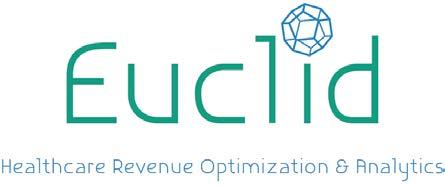
that streamlines tedious payment processes and keeps track of every patient encounter until payment is fully settled.
Our solution is designed to help hospitals, healthcare providers, and billing companies streamline their revenue collection processes while improving the overall experience for patients and providers using intelligent algorithms that sit on a vast database of healthcare data and full integration with Electronic Health Record Systems (EHRs) and healthcare clearinghouses. Our customers/clients have been able to reduce their A/R by 25%, lower collection costs by up to 30%, and capture a 7-10% revenue lift.
Our services include end-to-end automation in claims billing for primary, secondary, and tertiary insurances, eligibility verification, claims scrubbing, denial management, automated appeals and claims resubmission, automated payment posting, patient portal, and integrated clearinghouse services.
Our newest Euclid 4.0 offering software shows the various scenarios under which the software itself would fully automate the complex situations without the need for dropping the Explanations for Benefits / Electronic Remittance Advice into an Exceptions bucket – which then usually must be worked on by an employee. The system has developed built-in AI after learning from 10 million claims of data from payers and users to capture their true intentions resulting in robust analytics and amount balancing.






TMA Insurance Trust knows you value your independence and we want to help you maintain it. This is why we have researched the marketplace and we can help you determine if you qualify for group health insurance, even if you do not have any employees . If you are eligible, you will be able to get comprehensive group health insurance without the need to ask for a referral like you do with individual coverage.
Do you already have group coverage for your practice but are not satisfied? We may be able to help you improve your situation.



Get the coverage independents deserve. See if you’re eligible by contacting a TMA Insurance Trust advisor at 800-880-8181 Monday to Friday from 8:00 AM to 5:00 PM CST or by scanning the QR code. You can also visit us online at tmait.org. It willl be our privilege to serve you.


